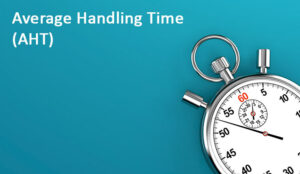Call monitoring is an important part of contact centre quality assurance, but how do you choose which calls to score?
Shaye asked our Community of industry professionals about this:
“With your QA department: what criteria do you use to determine an eligible call for scoring?
- Length of call
- Must Access callers account
- Completely random
I’m trying to decide how graded calls competing for an incentive should be filtered to benefit employee morale.”
Here’s what they said…
Random Calls and Targeted Monitors
In general, it’s good to pick random calls. But a good practice would be to include some targeted monitors too.
For example:
- Longer calls out of average
- Top call driver
- Specific topic that has been a pain point lately
I’d say: 5 monitors per month, 4 random and 1 targeted.
Thanks to Paolo
Use AHT as a Guide
Understand your contractual or solutioned AHT. Use that as a guide. From a Total Quality Management perspective, you would look at calls, tickets, and surveys to come up with a holistic score.
- Look at short and long calls to see what is going on. In some of my global accounts, there has been some funky business.
- Look at tickets, categorization, description, work notes, resolution steps, reassignment, reopen, etc.
- Look at survey comments.
Use all inputs to come up with a score.
Thanks to Imad
Use a Holistic Approach
I feel a holistic approach is needed. AHT is a good indicator; however, it doesn’t give a full story – as AHT can hide poor or excellent service, when what we should really be focusing on is service improvements to the client and customer satisfaction.
If you can use technology to identify positive or negative words/phrases, then this can help, but benchmarking in a range of AHT can be a good starting point.
Using only AHT, or account access or just one metric to identify calls to review can’t be the only answer.
Using contact reason codes helps identify areas for clients calls, and looking at call times in line with historical data with these can help identify changes and potential opportunities.
Considering the above for scheduled QA is a start, but then additional reviews and coaching based on individuals’ needs will get the best from the team.
Thanks to Neil
Exclude Short Calls
I generally exclude short calls of 1 minute or less from incentives. Really, it depends on why you are running it. Is this to improve QA or something specific? If that’s the case, set your call requirements around the thing you’re looking for.
Thanks to Marshall
Create a Matrix
I suggest you create a matrix that encompasses all of these and consider including different times of day.
Thanks to Cory
AHT to Place Settings
I use AHT to place settings around the pool of calls we randomly select from. Our KPI is 400 seconds for service calls and 700 for sales.
With incentives, we look at the 3 areas of improvement the team are working on and link them with another KPI. This brings the result to average out and helps with the team’s overall performance. We have found this works well.
Thanks to Justine
Try Speech Analytics to Focus on Specific Areas
I’d highly recommend using a tool like speech or conversation analytics to be able to focus on more specific pots – for example, repeat contacts or complaints – and automate large chunks of your scorecard.
Random sampling poses so many problems and struggles to highlight the real issues and positives. And, as a result, there’s a ton of rebuttal.
Thanks to Paul
Random Calls Within a Few Minutes of Your AHT Target
The simple answer: Random calls within a few minutes of your AHT target. You want the average call. These are the calls that most impact your business. These are actionable calls that will drive the most numbers.
In my last position, our Tech Support AHT was 10:20. I chose random calls between 5 and 15 minutes. We were quite successful in maintaining KPIs. Approximately 80% of our calls fit in this limit.
Outlier calls are situational. You can go witch-hunting in your spare time.
Thanks to Scott
Look at Everything
By only sampling calls based on what you think is your average – you’re most likely missing some very important insights.
For example, if an agent is great at getting customers off the phone quicker than your AHT average – without solving the customer’s problem – this will likely cause them to be pretty annoyed and eventually call back.
The ONLY way around this is to use tech to automate and provide key insights based on ALL of your calls. This is a prime example of where tech complements processes and improves outcomes.
Don’t just look for the problems you think you might have in specific areas, look at everything and then make judgements.
Thanks to Nick
If you are looking for more information to improve your call quality monitoring, read these articles next:
- What Are the Best Call Evaluation Criteria?
- 30 Tips to Improve Your Call Quality Monitoring
- Call Centre Quality Assurance: How to Create an Excellent QA Programme
Author: Robyn Coppell
Published On: 21st Jul 2023 - Last modified: 18th Feb 2025
Read more about - Call Centre Questions, Call Quality, Monitoring, Quality















